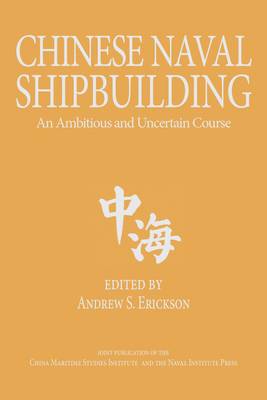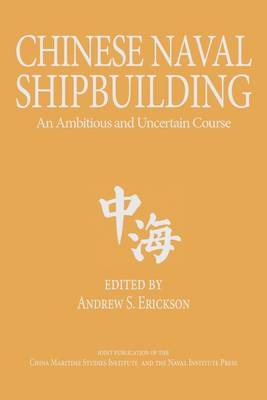
Door een staking bij bpost kan je online bestelling op dit moment iets langer onderweg zijn dan voorzien. Dringend iets nodig? Onze winkels ontvangen jou met open armen!
- Afhalen na 1 uur in een winkel met voorraad
- Gratis thuislevering in België vanaf € 30
- Ruim aanbod met 7 miljoen producten
Door een staking bij bpost kan je online bestelling op dit moment iets langer onderweg zijn dan voorzien. Dringend iets nodig? Onze winkels ontvangen jou met open armen!
- Afhalen na 1 uur in een winkel met voorraad
- Gratis thuislevering in België vanaf € 30
- Ruim aanbod met 7 miljoen producten
Zoeken
Chinese Naval Shipbuilding
An Ambitious and Uncertain Course
€ 42,95
+ 85 punten
Omschrijving
China's shipbuilding industry has grown more rapidly than any other in modern history. Commercial shipbuilding output jumped thirteen-fold from 2002-12, ensuring that Beijing has largely reached its goal of becoming the world's leading shipbuilder. Yet progress is uneven, with military shipbuilding leading overall but with significant weakness in propulsion and electronics for military and civilian applications. It has never been more important to assess what ships China can supply its navy and other maritime forces with, today and in the future. Chinese Naval Shipbuilding answers three pressing questions: What are China's prospects for success in key areas of naval shipbuilding? What are the likely results for China's navy? What are the implications for the U.S. Navy? To address these critical issues, this volume assembles some of the world's leading experts and linguistic analysts, often pairing them in research teams. These sailors, scholars, industry professionals, and government specialists have commanded ships at sea, led shipbuilding programs ashore, toured Chinese vessels and production facilities, invested in Chinese shipyards, and analyzed and presented important data to top-level decision-makers in times of crisis. In synthesizing their collective insights, this book fills a key gap in our understanding of China, its shipbuilding industry, its navy, and what it all means.
Specificaties
Betrokkenen
- Uitgeverij:
Inhoud
- Aantal bladzijden:
- 376
- Taal:
- Engels
- Reeks:
Eigenschappen
- Productcode (EAN):
- 9781682479001
- Verschijningsdatum:
- 15/02/2023
- Uitvoering:
- Paperback
- Formaat:
- Trade paperback (VS)
- Afmetingen:
- 152 mm x 229 mm
- Gewicht:
- 498 g

Alleen bij Standaard Boekhandel
+ 85 punten op je klantenkaart van Standaard Boekhandel
Beoordelingen
We publiceren alleen reviews die voldoen aan de voorwaarden voor reviews. Bekijk onze voorwaarden voor reviews.










